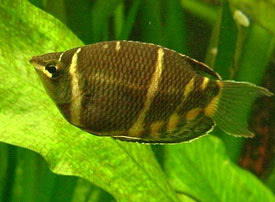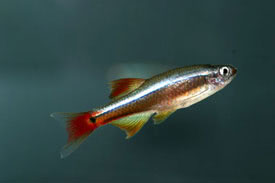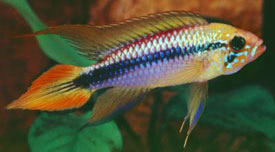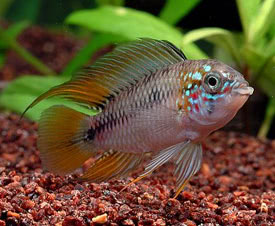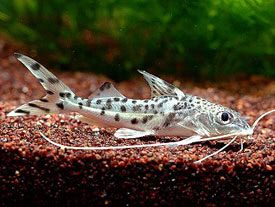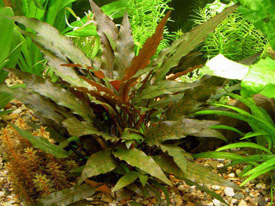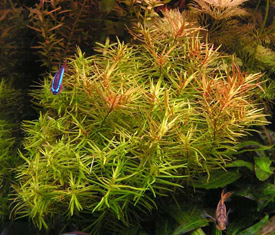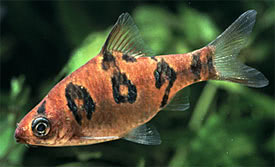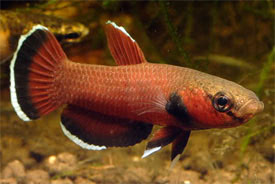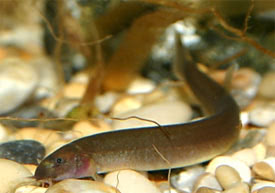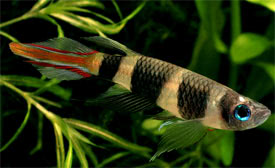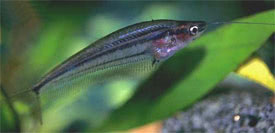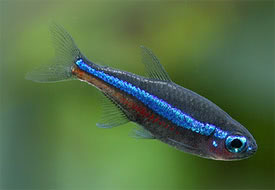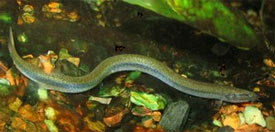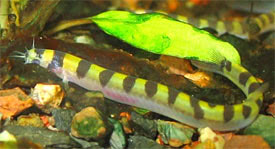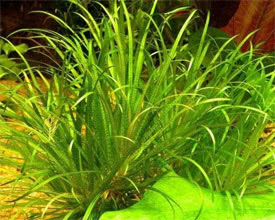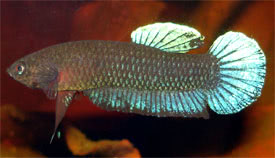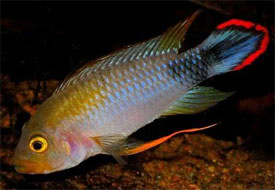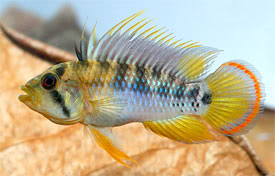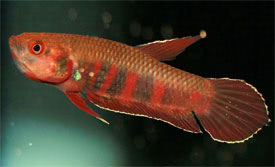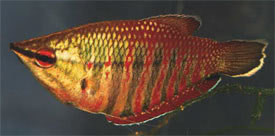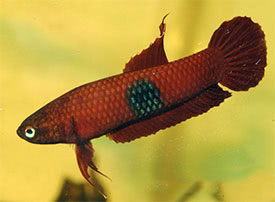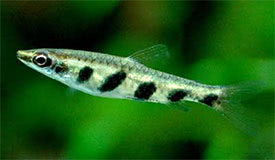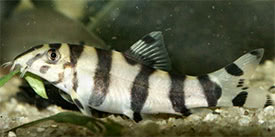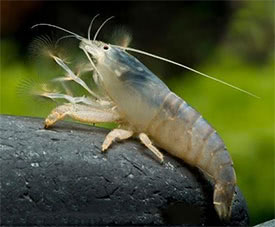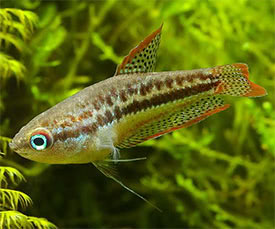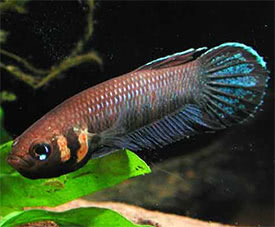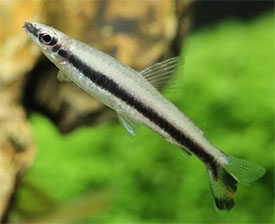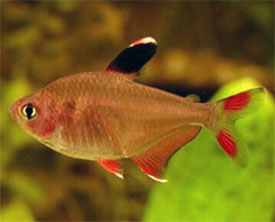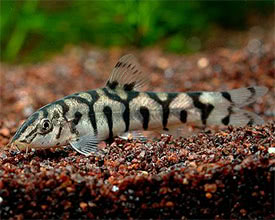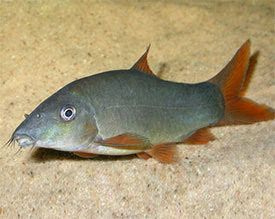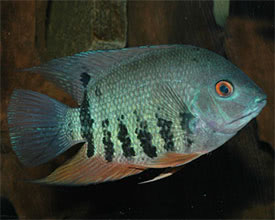
 Magyarul / Hungarian
Magyarul / Hungarian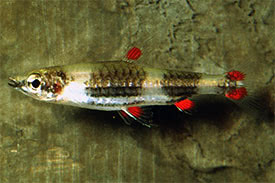
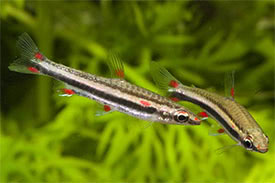
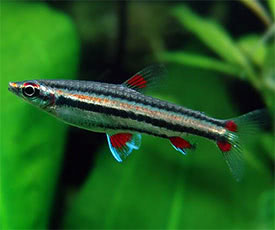
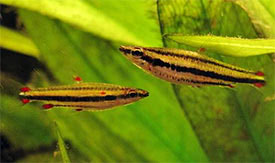
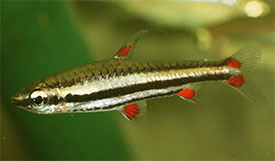
- Scientific name: Nannostomus trifasciatus
- Synonyms: Poecilobrycon vittatus (Ahl, 1934), Threebanded pencilfish; Threestripe pencilfish
- Common name: Three-lined Pencilfish
- Group: Characins
- Habitat: South America; Guyana, Brazil, Peru, Colombia, and Bolivia.
- Size: 4-6 cm
- Biotope: Inhabits slow-flowing blackwater rivers, and swampy areas, particularly with dense aquatic vegetation and with submerged woody structures. Often found in flooded forest areas.
- Social behavior: A quite peaceful schooling fish, that best kept with similarly-sized, peaceful fish. It is more aggressive than its congenders and even serious injury can occur, so always keep them in large groups where any aggression is spread between individuals. They swim in the middle and top areas of the aquarium, so bottom-dweller tankmates would be a good choice.
- Diet: Omnivorous; Micropredator, feeding on tiny invertebrates in nature. In aquarium they accept dried foods and other small live and frozen foods.
- Breeding: Hard
- Tank: Minimum 50 litres
- Population: 8-10 fish for 70 litres
- Decoration: They require a densely planted tank with dark substrate. Floating plants are useful addition to subdue the lighting. The tank can be decorated with driftwood branches and dried leaf litter.
- Temperature: 22-28 °C
- pH: 4-7.5
- Hardness: 1-12 NK°
- Lifespan: 3-8 years
Description: Interestingly Nannostomus trifasciatus have distinct daytime and nighttime color patterns. During the day, it has three black longitudinal stripes that run along the body, while at night three large dark spots appear on the sides of the fish, extending from its back to its belly. Recent research has shown that the daytime color pattern may serve a recognition function for individuals of the same species, while the nighttime pattern may help hide the fish from nocturnal predators. In between the dark stripes the fish is gold in color on its back and sides and silver underneath. The gill cover and dorsal, pelvic, anal, and caudal fins have large red blotches, varying in size depending on the population. Nannostomus trifasciatus is very similar to Nannostomus marginatus, but the latter species can be distinguished by its smaller size. Wild populations vary in color pattern depending on origin, for example a form from Peru has a particularly silvery body color, while another possesses an unusually long red stripe on the body. However wild fish are still exported on a regular basis, the majority of Three-lined Pencilfish in the aquarium trade are farmed commercially. It is a quite popular and commonly available fish and an excellent choice for the newcomer to pencilfishes since it’s less demanding and hardy. Three-lined Pencilfish rests near the water surface at night and during the day inhabits the middle to upper water layers.
Adult males are more intensely-patterned, and are usually slimmer than females. Males may also have an additional row of red spots in the gold area between the middle and uppermost stripes. They are egg scatterers with no parental care about the eggs or the fry. Breeding is possible in aquarium, in a densely-planted tank a small number of fry may appear without intervention, but of course it is rare. It is best breed them in a smaller, separated aquarium. The tank should be dimly lit with the base covered with some kind of mesh of a large enough grade so that the eggs can fall through but small enough so that the adults cannot reach them. Alternatively fill the base of the tank with Java Moss that can hide the eggs from the parents. Use soft and slightly acidic water. An important part of getting these fish to breed is food: a variety of live foods are necessary for females to produce eggs. Breeding is possible in pairs or in a smaller group of one or two males and several females. Once the eggs are noticed in the aquarium, the adult fish should be removed, as they will eat the eggs. The number of the eggs can vary between 30 and 70. The eggs hatch in 18-72 hours, and the fry become free-swimming around 5 days. The fry are very tiny and should be fed with sufficiently small live or dry foods. Once the fry are large enough they can be fed with newly hatched Artemia nauplii, or similar sized live foods. The fry do not look like their parents, they are darkly colored, and also possess an extended adipose fin that they use to swim. They grow slowly and reach adulthood in seven months.







